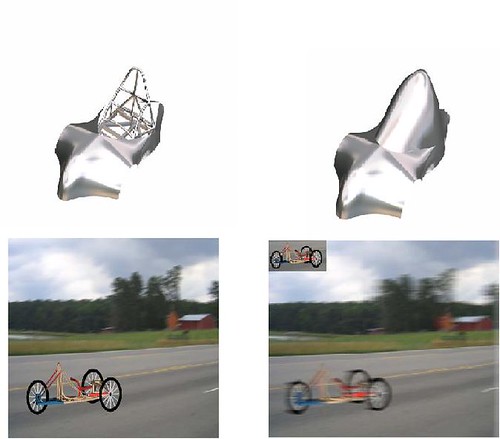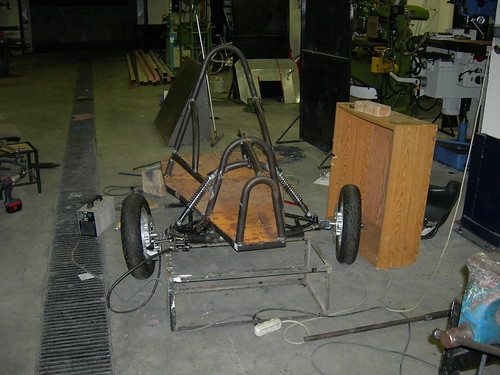The hybrid vehicle is the IYTECHNICS group production that wants to join the Tubitak Hybrid Vehicle Race. The group was set up and coordinated by Ahmet APAK and Advisor is Asst. Prof. Dr. Unver OZKOL. The hybrid vehicle group basic operations are made by the members and the research assistant Erkin GEZGIN,Cuneyt CANKAYA, Fatih Cemal CAN are mainly associated with the shell design and the these basic opeartions and they could teach these info to the undergarduate education students including also Ahmet.The basic engine specification is enabled by this sample calculations below:
HYDRID CAR ENGINE SPECIFICATIONS:
To decide the engine specifications of a vehicle, there are 4 base effects:
1-Wheel Friction Resistance
2-Slope Resistance
3-Air Resistance
4-Inertial Resistance of parts of Vehicle
The sum of these four resistance are the opposite resistance of cars motion. The torque of the car should be greater than this sum of resistances.We can measure the minimum torque with the calculation of this sum of resistances.
1-Wheel Friction Resistance:
Whell Friction Resistance comes from deformations on the way and on tires. This resistance force is associated with velocity of car,air pressure of wheel,vertical load on wheel,diameter of wheel and surface of way.We can calculate this resistance with the formula is below:
RL=(a+b.V).W
In this formula, a and b are constants which are calculated from the experiments, V is the velocity of the car, W is the total weight of the car. For our car, V=10 m/s and W=150 kilos and a=0.0041, b=0.0000255. When we put the values into equation, the result is 6.40838 N.
2-Slope Resistance:
When the car goes on the place which has a slope,this resistance is can be produced naturelly.We can calculate this resistance with the formula which is below:
RG=W.In this formula,W is the weight of the car,a is the degree of slope. For our car,W=150 kilos and a=5 degree.With these values, result is 64.1859 N
3-Air Resistance:
This resistance force comes from the flow of air on the car. This resistance is calculated by the formula which is below:
RA= (1/2).p.CD.AF.V2 In this formula, CD is the drag coefficient, AF is the projection of car from the front,p is the mass of air,V is the relative velocity to wind.
For our car, AF = 0.56 m2, p = 1.227 kg/m3, V = 10 m/s .The result is 10.3068 N.
4-Inertial Resistance of parts of Vehicle:
Some parts of the cars such as engine, wheels have revolution motion when the car has a linear motion so the inertia is produced by it. This inertia is added to linear inertia ;so,mass which balance the force and acceleration increases. All of them causes the resistance against the cars motion. We can calculate the increases of mass due to the inertia with the formula below:
Meq = ξ. Mv
In this formula, , ξ is a constant between 1 and 3, , Mv is the stable mass.
For our car, W=150 kilos, ξ=1.84. The result is Meq=138N.
Taking everything into consideration, total resistances are 218.901 N. If we divide this value to wheel radius, we can obtain the torque of the car. We take the radius of the wheel as 0,4 m and we can obtain the torque is 57.5604 N.m. When the engine produces this torque, there can be some manufacturing faults or some friction between the parts; so, if we divide this torque value to general efficiency coefficient(0.92169), we can find the minimum torque of our car. The minimum torque is 64.1859 N.m.
In addition to them, the chasis animation (Visual Nastran) and shell design (3D-Max) photo shown below:
The real chasis application is shown below:


